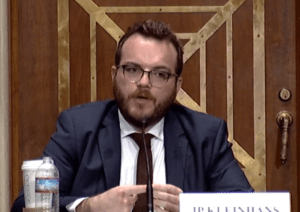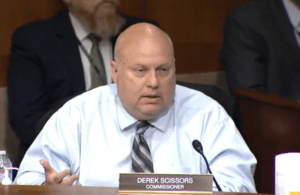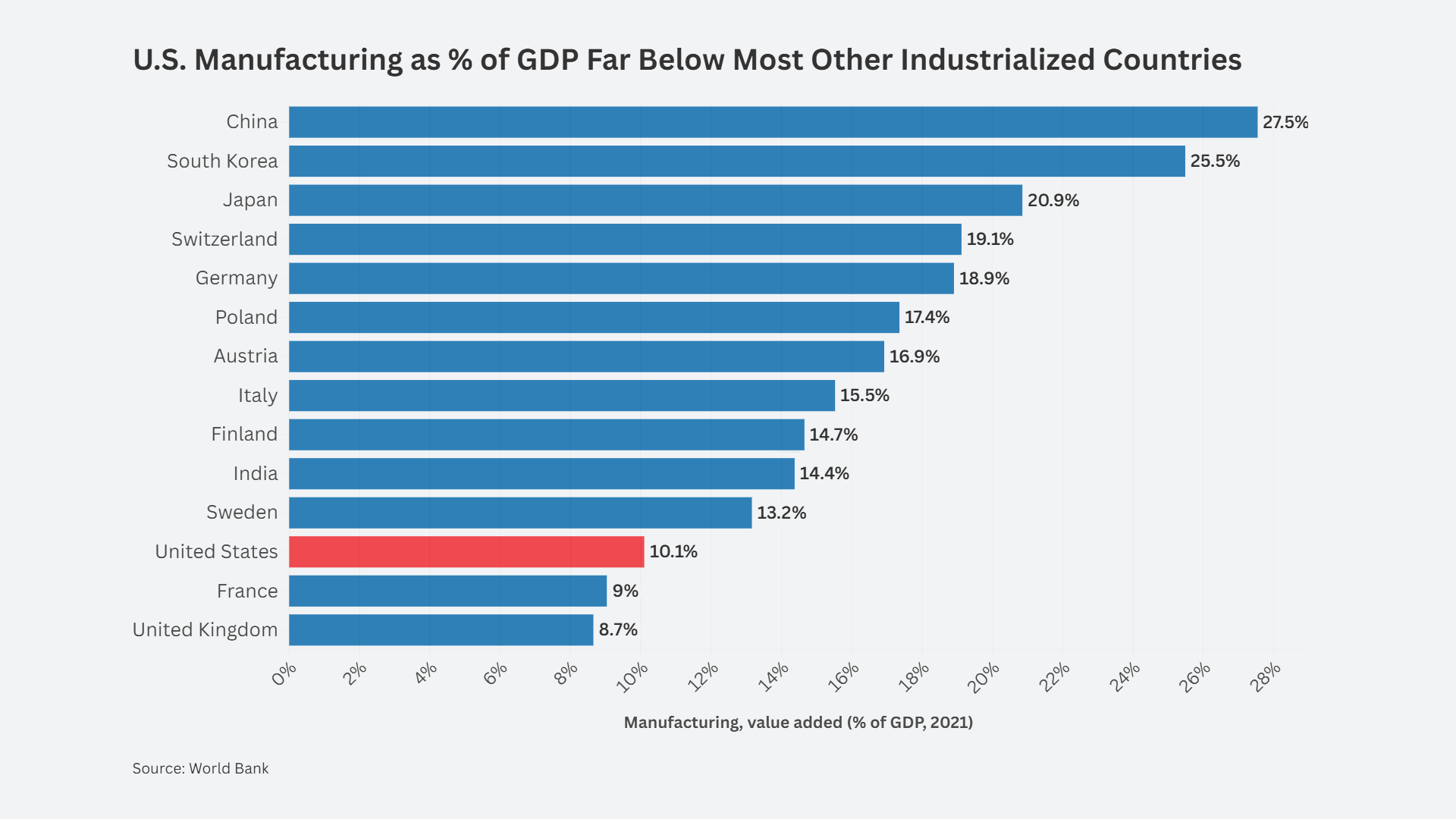The U.S. China Economic and Security Review Commission heard from four panelists on June 9 that pointed out a glitch in Washington’s supply chain concerns. It’s one thing to want to reshore a product line – be it pharmaceuticals or minerals used in EV batteries. It’s another to find an end-user to buy it.
The end-user is the real missing link in reshoring supply chains. The government is a minor player when it comes to purchasing. The private sector has to want to source locally.
Two of the panelists used rare earth mining and processing, and semiconductors as examples.
 “Government sales of semiconductors, including for the military, is around 1%. The volume business is consumer electronics, cloud computing, and other private business,” said Jan-Peter Kleinhans, Project Director at Stiftung Neue Verantwortung, a German think tank. “If you are at all serious about reshoring, you have to include the end customer industries. Right now it is all driven by a push from the government and the semiconductor industry. But you will have to include automotive and smartphone industries who will be willing to procure chips from allied nations. My impression is that there is very little discussion about that.”
“Government sales of semiconductors, including for the military, is around 1%. The volume business is consumer electronics, cloud computing, and other private business,” said Jan-Peter Kleinhans, Project Director at Stiftung Neue Verantwortung, a German think tank. “If you are at all serious about reshoring, you have to include the end customer industries. Right now it is all driven by a push from the government and the semiconductor industry. But you will have to include automotive and smartphone industries who will be willing to procure chips from allied nations. My impression is that there is very little discussion about that.”
You can read Kleinhans’ written testimony here: [Testimony]
Commissioner Derek Scissors said the issue of reshoring was difficult because it boiled down to picking favorite sectors, and all the industries that support it.
John VerWey, East Asia National Security Adviser at the Pacific Northwest National Laboratory said if he had to pick one sector right now it would be semiconductors. If you are of the mind that cars are going fully electric and autonomous; greater computational speed is being built to create smarter artificial intelligence machines; data storage and cloud computing will expand; and biotechnologies might develop to include nanochips one day, then semiconductors might be as good as gold.
VerWey noted that to make it successful, you need the entire ecosystem of chemical suppliers, masks and lab coat makers nearby. “By investing in a manufacturing asset in that way, you are doing something that is market-based but you have to get better visibility from the end customer to make it work.”
You can read Verwey’s written testimony here: [Testimony]
Government funding for stockpiling critical goods, including medicine, and financial aid from Defense Production Act grants for distressed companies in a critical economic sector is another way to reshore, but won’t be enough on its own. There always has to be a buyer that is much bigger than the government.
“The goal should be that for each critical segment of the economy, there should be at least three domestic manufacturers, or three in friendly countries that can produce 50% or more of our needs,” VerWey said.
Kristin Vekasi, Associate Professor from the University of Maine said there was a trade-off with mining key metals for green tech.
“There are supplies in many countries, not just China which has the power position in rare earth mining. To mine and process it is environmentally toxic,” Vekasi said, adding that support for recycling efforts and so-called urban mining – where metal scraps like lithium and nickel are repurposed to make new batteries – is one solution.
You can read Vekasi’s written testimony here: [Testimony]
End users for rare earths include defense contractors, chip makers, medical device makers, and – primarily – batteries for EVs. Vekasi said that Japan was once 90% reliant on China for its rare earth materials but created a private-public partnership through the Japanese Oil, Gas and Metals Association to diversify supply chains. Now around 30% comes from Southeast Asia and only 60% comes from China, though it is unclear if the Southeast Asian companies are Chinese multinationals.
“For mining and metals, we need to focus on the midstream especially in the long term as this is where the real choke point lies,” she said, adding that the real expertise now on rare earths is mostly all in China.
Commissioner Derek Scissors returned to the semiconductor issue. His argument was that the U.S. can invest in new chip fabrication plants, called fabs. But will still be reliant on all the key source materials. Think solar panels in the U.S. that are almost fully reliant on solar cells from Chinese multinationals spread out throughout the mainland and Southeast Asia.
“I rather have the materials that go into the semiconductor process. So you got the fab, but I got all the materials and I know the fab can draw in those materials, so why focus on the final product and not the materials needed to make it?” he asked.
VerWey countered saying that you could establish a silica mine operation, which would be just as advantageous for the solar industry. “Theoretically, increased production of silica would satisfy chip and solar demand. But it requires a large amount of very patient capital and very high risk, with a 95% failure rate. Whereas the case for a leading-edge fab is less risky. You have Apple telling their contractors they need more capacity for chips. Mining does not have that request, so it is less desirable as an investment,” he said.
Kleinhans told the Commission that a crucial mystery is what is the price point an end-user like Apple can live with to make them source chips from the U.S.? 
“It is about the cost of the location. If you cannot bring the end customers to the table and get a very serious answer to that rather simple question then you will have a very hard time to come up with business cases for these new fabs,” Kleinhans said. “So then what? You subsidize the hell out of an industry and realize that these fabs are not being used because ultimately, hypothetically, it might be more cost-effective to order from Taiwan instead of from Arizona. The big purchasers of chips – consumer electronics, cloud providers, and auto – you have to ask them what it would take to be interested in ordering chips from a domestic fab,” he said. “In this debate, their voice has been silent.”
According to the oral testimony of Harry Moser, a domestic manufacturing advocate and founder of the Reshoring Initiative, the U.S. is about 10% to 15% more costly to produce, even compared with advanced economies.
“As long as that exists, our trade imbalance will not approve,” Moser said. One possible solution: “We need to reduce the value of the dollar. Use a market access charge to do that,” he said about a foreign transaction tax on securities purchases by foreign-based portfolio managers.
“Through 2018, we found that reshoring was done because of rising wages in China, then because of tariffs, and now because of the increasing risk of decoupling,” Moser said. “All of that has increased corporate interest in reshoring.”













